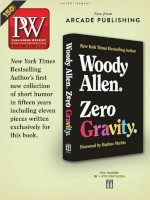Battles over books are being waged from all sides of the political spectrum. Booksellers, teachers, and students worry that books potentially alienate or harm readers because they contain racial epithets or demeaning depictions. Politicians seek to ban books from curricula out of fear that certain books offend the sensibilities of children, distort the historical record, or present the human experience in ways they don’t like. Although liberals and conservatives often clash in these debates, they attribute great power to the written word.
With tempers high on all sides, it sometimes seems easier to drop some books altogether rather than incite another battle in the polarizing culture wars. But there is a path beyond the apparent impasse of canceling or defending works at odds with today’s sensibilities. It requires recognizing that artistic masterpieces are not defined by perfection but, in Henry Louis Gates Jr.’s useful definition, are “endlessly compelling [works] speaking to the human condition beyond time and place.” Canonical works reframe essential questions rather than settle debates; by definition they do not comfort but confound. Such works touch on universal issues in terms partly handed down by tradition and partly invented anew. Honoring the canon does not mean reflexive reverence but putting works to the test of time.
An honest appraisal of Ernest Hemingway’s landmark 1926 novel, The Sun Also Rises, illustrates how to engage with a work partly at odds with today’s sensibilities. A staple in high school English classes, Hemingway’s first novel introduced countless readers to the post–World War I “lost generation’s” search for a livable code of conduct while drinking, flirting, and watching the bullfights in Spain. But in the space of little more than a single page, consistently overlooked by most critics, Hemingway uses the n-word 16 times. I have been teaching literature to college students for 26 years and know that in a 21st-century classroom, awkward silence or evasive apologies about this conspicuous use of a racial epithet by such an intentional author will not cut it. Failing to analyze this scene is not only a missed opportunity that can easily lead to the book being dropped from the curriculum altogether, it is also an injustice to Hemingway as the progenitor of modern American fiction. Ignoring Hemingway’s obsessive use of the n-word shortchanges his art and fails to grasp that a work becomes canonical not because of shimmering perfection but because successive readings reveal additional significance.
Instead of making apologies for The Sun Also Rises or “canceling” the book, students can be shown how to hold Hemingway accountable to his self-defined standard of writing “the truest sentence” possible. Hemingway’s unsparing use of the n-word serves a complicated function in his book. It acknowledges the pivotal role played by race in the project of establishing American identity without authentically representing the African American characters. In this respect Hemingway’s use of the n-word betrays his own credo of writing the “truest sentence” possible.
In a seminal study of the role of race in American fiction, Playing in the Dark, Toni Morrison shows that Hemingway needs African American characters for his project of authentic writing, but also that his use of verbal stereotypes reveals problems in his art. Today’s readers know that race is integral rather than peripheral to the project of collective self-understanding to which Hemingway gave such a resonant voice.
New generations bring new questions, which, in Morrison’s words, “give the text a deeper, richer, more complex life than the sanitized one commonly presented to us.” The question is not whether Edgar Allan Poe, Mark Twain, Hemingway, or Willa Cather offend or confirm our sensibilities. Today’s question is whether these classics remain sufficiently rewarding once we notice their often maladroit handling of racial identity. Avoiding the issue is no longer an option.
By examining how such moments shape great works in both content and form, Morrison emphasized, we gain a deeper understanding of the centrality of race in creating an American identity. A clear-eyed analysis of Hemingway’s use of the n-word in The Sun Also Rises shows how to read works that are culturally significant yet out of sync with today’s sensibilities.
Our nation’s greatest books deserve forthright new introductions that go beyond simply asserting a book’s lasting relevance. Instead of canceling these works, 21st-century students are superbly attuned to deepening their fascination, power, and relevance for our time.
Ulrich Baer is a professor at NYU and a recipient of Guggenheim, Getty, and Humboldt fellowships. An expanded version of this article appears as the foreword to a new Warbler Press edition of The Sun Also Rises.



 Volume 269
Issue 27
06/27/2022
Volume 269
Issue 27
06/27/2022





